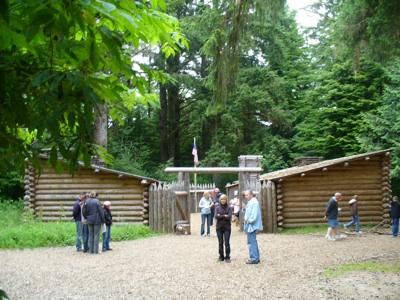Editor's note: Having crossed the country while following the Oregon National Historic Trail, David and Kay Scott now are heading back east, this time by starting out along the Lewis and Clark National Historic Trail.
Here we go again, only along a different route. This time we are headed east instead of west, and along the Lewis & Clark Historic Trail rather than the Oregon National Historic Trail. We would have preferred to follow the Corps of Discovery on its outbound journey to the Pacific, but we need to get back to our home in south Georgia. We can rationalize taking the trail east because, unlike most emigrants on the Oregon Trail who were on a one-way trip, the Corps of Discovery needed to return home after reaching the Pacific Ocean.
We will have to make some decisions along the way because Lewis & Clark’s return route to St Louis was somewhat different than the route they followed to the Pacific. In addition, the two leaders didn’t always travel together, another complication in selecting a route to St. Louis. Our inclination is to follow the Corps of Discovery’s outbound route because we would like to visit Fort Benton (Montana) for the first time.
Sunday and Monday of this week were spent visiting various sites that are part of the Lewis & Clark National Historical Park, of which the Corps of Discovery’s 1805-06 winter home of Fort Clatsop is the central unit. The relatively new national historical park is a cooperative arrangement among the National Park Service, the state of Oregon, and the state of Washington. During our last visit many years ago the NPS unit was known as Fort Clatsop National Memorial.
On the Washington (north) side of the Columbia River, Clark’s Dismal Nitch is the site where members of the group were pinned down for five days by a fierce storm. The group then moved to nearby Station Camp where they were rewarded with their first view of the Pacific. The men camped here November 15 - 25 before the leaders polled members of the group (including Sacagawea and Clark’s black slave, York) and decided to travel to the river’s south side that offered more shelter from the harsh winter weather. Nearby Cape Disappointment on the Washington coast was the westward point reached by the corps. A Lewis & Clark Discovery Center at Cape Disappointment offers a chronological review of the trip taken by the Corps of Discovery. A $5 entrance fee is charged and NPS passes are not accepted.
In addition to Fort Clatsop, Oregon units of the park include the Salt Works where five members of the group boiled large pots of ocean water to make the salt needed for the return trip to St. Louis. Access to the ocean’s saltwater was one of the major factors for choosing the location for building Fort Clatsop. Moving further inland from the mouth of the river would likely have resulted in improved weather conditions, but would also have made access to salt making more difficult. A location more distant from the mouth of the river would also make it less likely the men would make contact with trading ships that visited this area.
The Fort Clatsop unit (The fort was named by Lewis & Clark to honor the local Indian tribe whose members traded with the corps during the miserable winter spent here.) consists of a visitor center, a replica of the original fort a canoe landing, and a trail to the Pacific. The visitor center contains exhibits and has a small theater where two 25-minute movies are shown each hour. The first replica fort was built in 1955 and burned in 2005. It was rebuilt and reopened a year later. Consider that members of the Corps of Discovery constructed the original fort in three weeks. The National Park Service offers guided hikes, guided kayak-canoe tours, and a variety of ranger programs each day.
From Portland, we'll head east on Highway 30 along the Columbia River Gorge National Scenic Area. We missed this beautiful stretch of the river during our westward trip when we chose to detour at The Dalles in order to follow the Barlow Road to Oregon City.
David and Kay Scott are regular contributors to the Traveler. Their book, The Complete Guide to the National Park Lodges was first published by the Globe Pequot Press in 1997 and is now in its sixth edition.


 Support Essential Coverage of Essential Places
Support Essential Coverage of Essential Places






